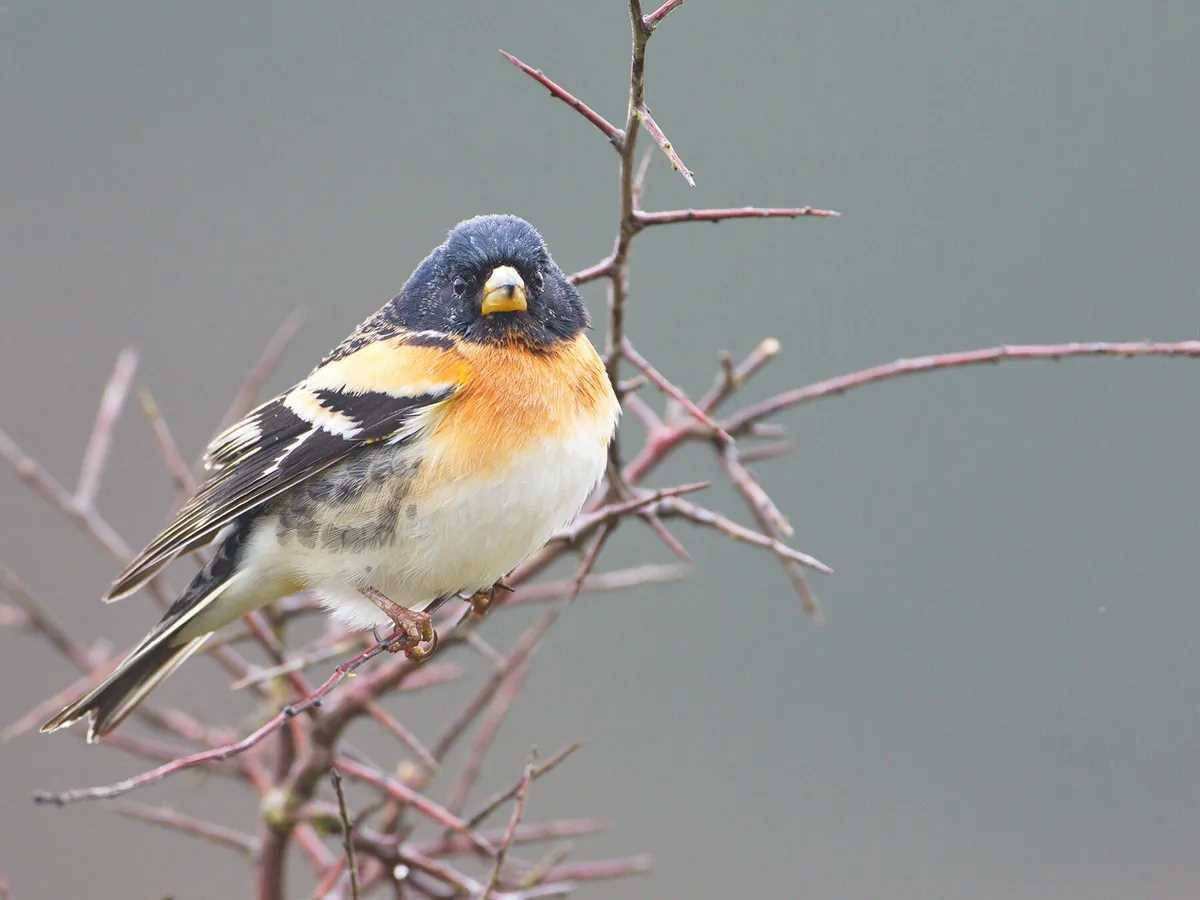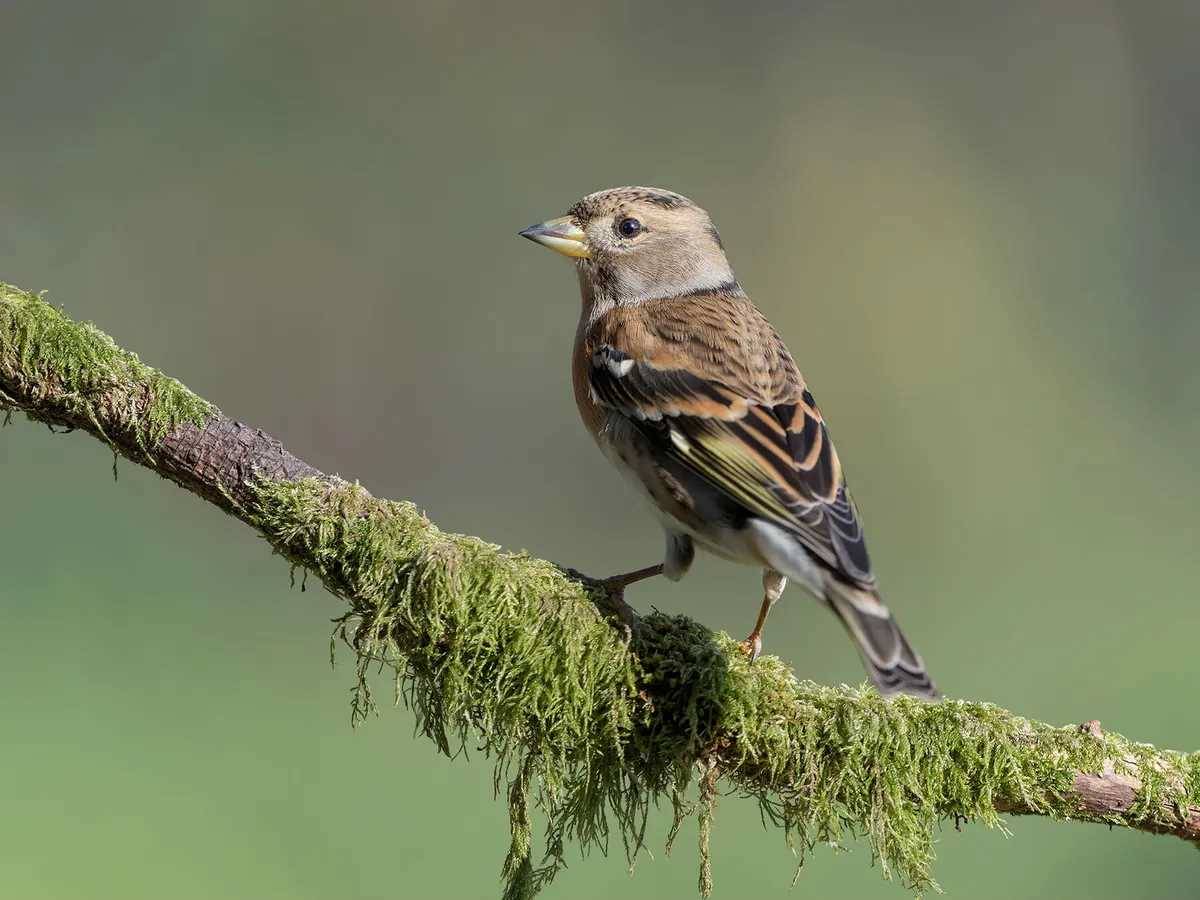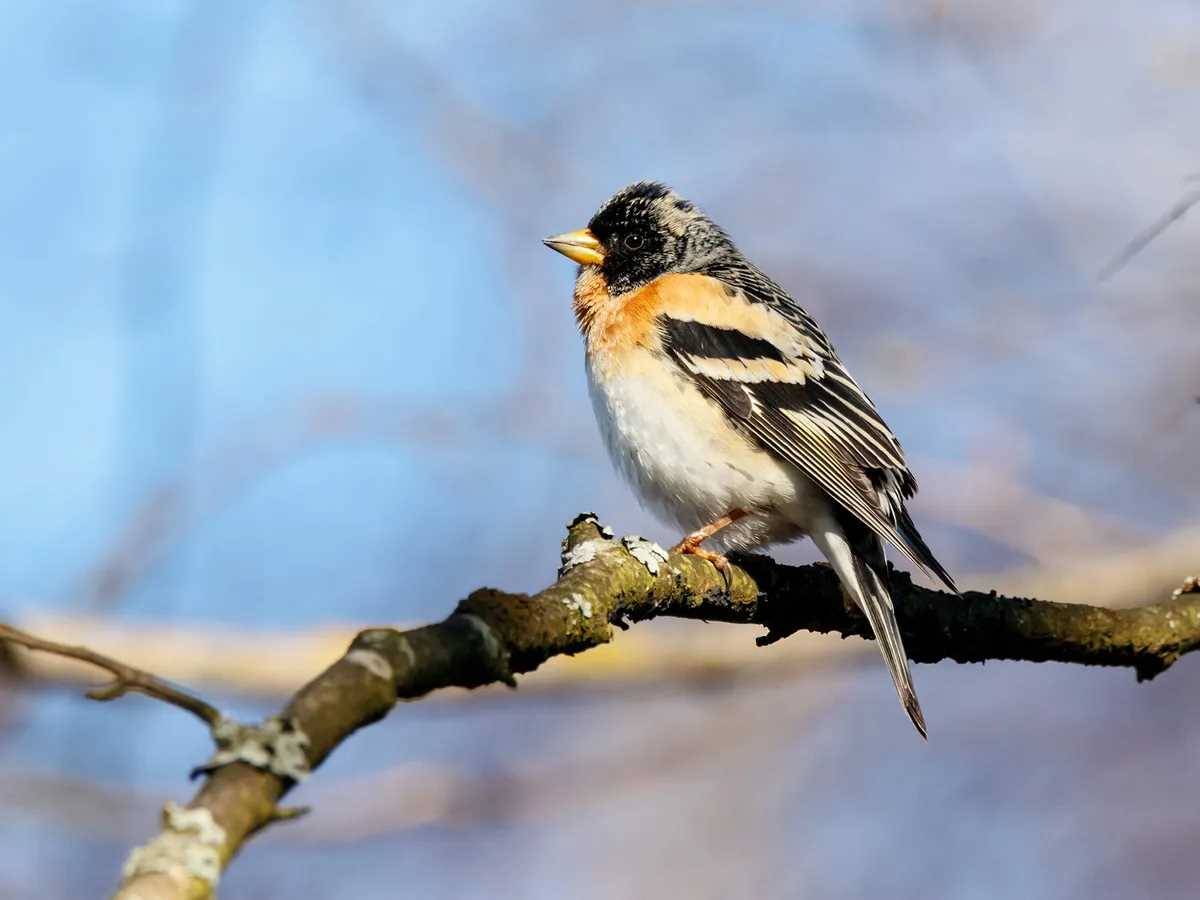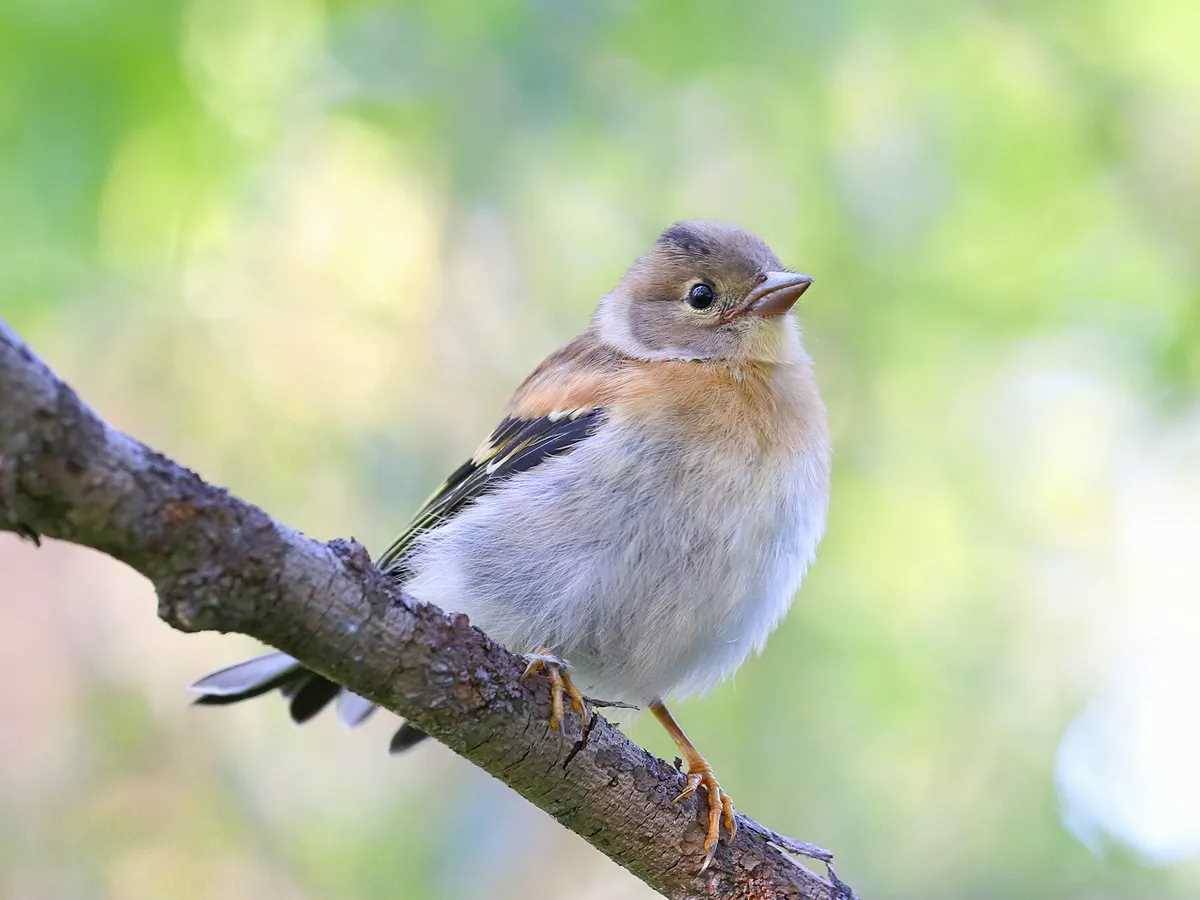

Although monotypic, the brambling is a close relative of the chaffinch with whom it often flocks. Found almost exclusively across the northern palearctic it migrates south in September returning to its breeding grounds in April each year.

Brambling
In his summer plumage the adult brambling is a handsome bird, well patterned with contrasting colours. The upper wing is mainly black, with the tail, back, mantle, head, nape and sides of the neck also a shiny black.

Brambling in winter plumage
In flight the call is a singular 'tsweek' or 'tchec'. The song is a collection of trills, tweets and chirps which change in both volume and pitch.
During the summer months the diet of the brambling consists mainly of insects which it finds in tree bark or amongst leaf litter whilst ground foraging. In the winter, seeds, berries and nuts, form the mainstay of the bird's diet. Its favourite food however, is beechmast which are brown nuts from the beech tree encased as pairs in a prickly outer casing and frequently they are the cause of the appearance of large flocks descending on areas where the nut is abundant.

Brambling perched in a tree
Bramblings are common throughout northern Europe and Asia from Iceland in the west across Scandinavia and Siberia to Kamchatka in Russia's far eastern corner and are almost wholly migratory, over wintering in southern and south western Europe, North Africa, the Middle East and South East Asia. Annually, during migration small numbers of bramblings arrive lost in Alaska, many of which continue their journey south through North America and reach as far south as Colorado and east to the Atlantic coast.

Bramblings often flock in huge numbers, particularly in the winter months, and have been known to gather in their millions, especially across central and southern Europe. They prefer areas of woodland with birch, beech and coniferous trees. In size and build they are identical to the chaffinch and not dissimilar in overall colour and patternation. Careful observation will however, show distinct yet subtle differences allowing positive identification of the two species.

The female brambling builds a small, well camouflaged, cup shaped nest, normally in the fork of a tree or against the tree trunk, well above the ground and will lay a single clutch of 4 – 9 eggs annually from May to August. Incubated by the female for two weeks until hatching the young fledge approximately fourteen days later.

Brambling Female

Juvenile Brambling
The average life expectancy of a brambling is between two to five years.
